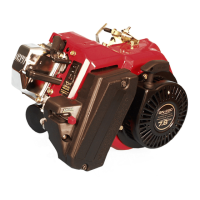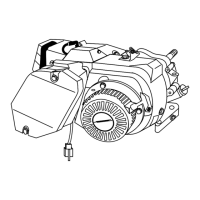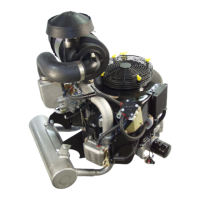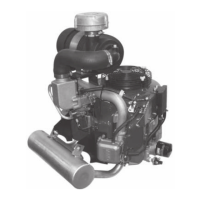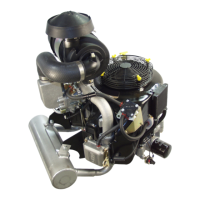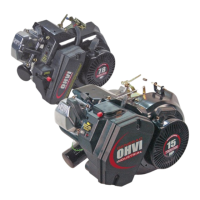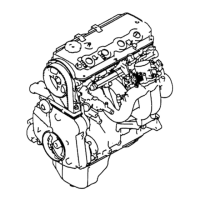Study these “SAFETY RULES” carefully before installing,
operating or servicing this equipment. Become familiar with
the
Owner’s Manual
and with the unit. The equipment can
operate safely, efficiently and reliably only if it is properly
installed, operated and maintained. Many accidents are
caused by failing to follow simple and fundamental rules or
precautions.
Generac cannot possibly anticipate every possible circum-
stance that might involve a hazard. The warnings in this
manual, and on tags and decals affixed to the unit, are,
therefore, not all-inclusive. If you use a procedure, work
method or operating technique Generac does not specifi-
cally recommend, you must satisfy yourself that it is safe for
you and others. You also must make sure the procedure,
work method or operating technique that you choose does
not render the unit unsafe.
DANGER: Do not tamper with the engine governed
speed. High operating speeds are dangerous and
increase the risk of personal injury or damage to the
equipment. Operating at low speeds with heavy load
may shorten the engine’s life.
For fire safety, the unit must be installed and maintained properly.
Installation always must comply with applicable codes, standards, laws
and regulations. Adhere strictly to local, state and national electrical and
building codes. Comply with regulations the Occupational Safety and
Health Administration (OSHA) has established. Also, the unit and related
components must be installed completely in conformance with the manu-
facturer’s instructions and recommendations. Following proper installation,
do nothing that might alter a safe installation and render the unit in non-
compliance with such codes, standards, laws and regulations.
• Do not smoke around the engine. Wipe up any fuel or oil spills immedi-
ately. Let dry before starting the engine. Never leave oily or fuel-soaked
rags on or near the engine. Keep the area around the unit clean and free
of debris.
• Never operate the engine (a) in the rain; (b) in any enclosed compartment;
(c) if the engine speed changes; (d) if the engine sparks; (e) or if flame or
smoke is observed while the engine is running.
Never work on this equipment or handle any electrical device while stand-
ing in water, while barefoot, or while hands or feet are wet. Dangerous
electrical shock will result.
• In case of accident caused by electric shock, shut down the source of elec-
trical power at once. If this cannot be done, free the victim from the live con-
ductor. AVOID DIRECT CONTACT WITH THE VICTIM. Use a dry board,
dry rope or other nonconducting implement to free the victim from live con-
ductor. If victim is unconscious, apply first aid and get medical help.
This engine was designed and manufactured for specific applications. Do
not attempt to modify the equipment or use it for any application for which
it was not designed.
• Inspect the fuel system frequently for leaks or damage. Repair or replace
any damaged or leaking component immediately. Never attempt to
change, alter or modify the fuel system in any way that might affect safe-
ty or compliance with applicable codes and standards.
• The engine gives off DEADLY carbon monoxide gas through its exhaust
system. This dangerous gas, if breathed in sufficient concentrations, can
cause unconsciousness or even death. This exhaust system must be
properly installed, in strict compliance with applicable codes and stan-
dards. Following installation, you must do nothing that might render the
system unsafe or in noncompliance with such codes and standards. Never
operate this equipment with a leaking or defective exhaust system.
• This engine requires an adequate flow of cooling air for its continued prop-
er operation. Never operate the equipment inside any room or enclosure
where free flow of cooling air into and out of the equipment might be
obstructed. Without sufficient cooling air flow, the engine quickly over-
heats, damaging the engine or nearby property.
• Do not insert any object through the cooling slots of the engine. You could
damage the equipment or injure yourself.
• Allow at least two feet of clearance on all sides of the engine, even while
operating it outdoors, or you could damage the engine.
• Do not operate the engine faster than the speed necessary to operate the
equipment. Do not run the engine at high speed when not operating the
equipment.
• Thoroughly inspect the engine for loose or damaged parts before each
use. Do not use the engine until adjustments or repairs are made.
• Check the oil level in the engine before each use.
• Inspect the unit periodically. Repair or replace all damaged or defective
parts immediately.
• Keep hands, feet, clothing, etc., away from moving parts of this engine.
Gasoline is highly FLAMMABLE, and its vapors are EXPLOSIVE. Do not
permit smoking, open flames, sparks or heat in the area while handling
gasoline. Avoid spilling gasoline on a hot engine. Comply with all laws reg-
ulating storage and handling of gasoline.
• Store gasoline and other fuels only in containers designed and approved
for the storage of such materials.
• Pressure can build up in the fuel tank. Loosen the fuel tank slowly to
relieve any pressure in the tank.
• Do not overfill the fuel tank. Always allow room for fuel expansion. If the
tank is over filled, the fuel can overflow onto a hot engine and cause a
FIRE or an EXPLOSION.
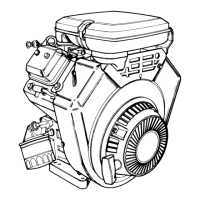
